Changing dynamics of deterrence in international security and strategic paradigm (Part 1 of two-part series)
Deterrence requires a national strategy that integrates diplomatic, informational, military, and economic powers. India must develop strategies, plans, and operations that are tailored to the perceptions, values, and interests of specific adversaries, writes Lt Gen P R Kumar (retd) for South Asia Monitor
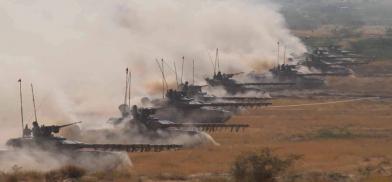
Deterrence is still fundamentally about influencing an adversary’s decisions. It is about a solid policy foundation. It is about credible capabilities. It is about what a nation and its allies as a whole can bring to bear in both military and nonmilitary sense, said C. Robert Kehler, former US Air Force general who served as Commander, United States Strategic Command.
Change has always been the only constant in this dynamic world, but the rapidity of change in the global security environment accelerated ever since 9/11 and Global War On Terror (GWOT). In today's globalised environment Thomas Friedman’s iconic book titled 'The World is Flat' is even more applicable to security; minor ripples anywhere in the world impacting all, whether it be localised conflicts, economic depression, or national disasters.
Geopolitical landscape
Diminishing comprehensive national power (CNP) and power projection capabilities of the US starting the slide to a multipolar world; the emergence of China as a peer competitor; the resurgence of Russia under President Vladimir Putin; state-controlled narratives leading to signs of ultra-nationalism; authoritarian governments like the Philippines, North Korea, Syria, Turkmenistan; emerging powers with regional aspirations like Iran, Saudi Arabia, South Africa, Nigeria, Turkey, India; the rise of religious Islamic fundamentalism with a twist of occupying territory and establishing a caliphate like the ISIL; global warming and climate change indicators; transnational MNCs with their own agendas, drug cartels and international crime syndicates, and yes, an international disaster COVID 19 has changed the world's scape.
There is a renewed political, ideological, economic and military competition due to globalisation which brought many good practices and developmental growth, but is a major driver of instability and conflict. While the threat of full-scale conventional wars have gone correspondingly the span of conflict, its complexity, unpredictability, lethality, accuracy, reach and manifesting into many domains have emerged.
The physical and nonphysical domains including the cognitive have expanded. There are no front, rear, and flanks, and there is no place to hide. Many new types of competition/confrontation/warfare have also emerged/emerging like a hybrid, media, economic, cyber, network-centric, information, the electromagnetic spectrum, asymmetric, digital, waged either singularly or cross domains both in peace, no war no peace, or war. From time immemorial, and especially so in today's troubled times, deterrence has always been a key component of statecraft of a nation, to maintain internal and external stability and defend one’s integrity and sovereignty.
Let us first look at the definition of deterrence, compellence, and dissuasion. The etymology of the word deterrence starts with the Latin word deterre – to frighten from or away. Oxford dictionary defines deterrence as ‘the action of discouraging an action or event through instilling doubt or fear of the consequences, and compellence as a ‘direct action that persuades an opponent to give up something that is desired. The Complex Deterrence Theory, General Deterrence Theory (Immediate Deterrence Theory as applicable between the US and Russia during the Cold War period), and a lot of papers have emerged on deterrence in recent years. Applied effectively, deterrence discourages an adversary from pursuing an undesirable action. It works by changing the adversary’s calculation of costs, benefits, and risks. A country can, for instance, convince its opponents that an attack is so unlikely to succeed that it is not even worth the attempt: deterrence through denial; or a country may convince its opponents that defeating it would be so costly as to be a victory in the name only: deterrence through punishment; the third is to encourage adversary’s restraint by convincing the adversary that not undertaking the action will result in an outcome acceptable to him: deterrence through incentives.
In all cases, a rational adversary should decide to drop his plans. Compellence is active in nature and attempts to alter the status quo, while deterrence, in contrast, is passive and adjusting in nature and maintains the status quo. Following the terrorist strike on Parliament in December 2001, India unsuccessfully tried compellence strategy against Pakistan to give up its cross-border terrorism policy, while Pakistan successfully deterred India from waging a war. Another term used alongside is dissuasion, which derives from the Latin words “dis+suadere, i.e. to advise or persuade against”. Dissuasion covers a wide spectrum of deterring actions other than military deterrence like economic threats and promises. Dissuasion is, therefore, more comprehensive than deterrence. The purpose of dissuasion is “to discourage others from developing capabilities and/or adopting courses of action that are hostile to the interests of a nation. Dissuasion and deterrence are generally applied together to change the course of action of an adversary, which is how it is applied in this paper.
Deterrence building and management
Deterrence theoretically appears quite simplistic, but in its application, it is a vast subject guided by a number of theories, strategies, forms, types, and numerous other factors. All countries are managing/enlarging their strategic space to ensure freedom to conduct multi-domain (trade, influence, diplomacy, markets, security, and stability) actions, by a judicious combination of building bilateral and multilateral alliances and increasing their CNP, which leads to increased deterrence capability. Deterrence is also enhanced through security cooperation, military integration and interoperability, security, and intelligence agencies synergy. The deterrent impact of such cooperation and integration is both political and military in nature. The political impacts adversary decision-makers’ perception and political will; the potentially long-lasting, harmful post-conflict political and economic effects of taking on a nation (India). Allied and partner contributions to deterrence are significant. For example, they can provide host nation security, fly additional combat and support sorties, supplement naval presence, provide additional manoeuver forces, supplement ISR inputs, to name just a few. They could stay short of providing ‘kinetic support’ too. These actions contribute significantly to deterrence, force protection, and overall operational success. Terrorism, proxy war, information, and unconventional warfare (UW) are inherently difficult to attribute and subsequently to punish the originator, and, therefore, difficult to deter. Armed Forces do not possess the capabilities to carry out deterrence operations/deter in all domains especially non-military.
Deterrence requires a national strategy that integrates diplomatic, informational, military, and economic powers. India must develop strategies, plans, and operations that are tailored to the perceptions, values, and interests of specific adversaries. Deterrence strategies and actions must be developed for all phases of confrontation and conflict planning. Deterrence operations must, therefore, be planned and executed across all domains in concert with other elements of national and international power in order to achieve strategic objectives. A crucial aspect is that successful deterrence is knowledge-dependent and requires the ability to establish and secure communication access to adversaries in order to generate the desired decision outcomes. Human intelligence (HUMINT) naturally is essential in seeking to understand an adversary’s values, culture, decision calculus, risk propensity, and capacity for situational awareness as well as obtaining other information required for effective deterrence. Situational awareness is the sine qua non for deterrence where political direction, intelligence community, diplomacy, law enforcement, military, and even economic inputs must get synergised. Our military capabilities and potential must be visible and known to all as it’s a pivotal ingredient of deterrence. Effective deterrence combines military and non- military means. In some cases, military capabilities may not be an effective tool to deter a particular adversary’s action, making other instruments of power the primary deterrent. Additionally, the support of strategic partners should be integrated to enhance deterrence credibility, but deterrence must be viable as a unilateral strategy. Our deterrence will obviously be challenged by other affected Nations. Military options/actions will always remain the final pivotal option to achieve national objectives both proactive and reactive. One very important factor which is being increasingly accepted is the mind of the leader and people and their likely reaction to deterrence. I would like to re-emphasize here, that deterrence in security parlance covers a very wide spectrum of activities and domains and not just kinetic employment of armed forces.
Current ground realities regarding deterrence: The cold war deterrence (mainly nuclear) is no longer effective today, leading to a lot of cynicism about the relevance and even effectiveness of deterrence especially on illiberal nations and terrorist organisations. Even given the tremendous CNP of the US, increasingly many smaller nations from Iran, North Korea, Venezuela, the Philippines, Pakistan, etc are thumbing their noses at the US with impunity. Deterrence effect finds it difficult to prevent strategic competition which falls beneath the threshold of traditional military force, allowing these adversaries to make operational gains without tripping the ‘go-to-war’ calculus of the adversary. Russia demonstrated some of these capabilities as part of its operations into Georgia, Crimea, and Ukraine. North Korea demonstrated its advanced cyber capabilities in November 2014 when they launched a cyberattack on Sony Pictures and China has declared it's Nine-Dash-Line and built artificial islands in the South China Sea to advance its sovereignty claims on vital international waterways that are part of the busiest maritime trade routes in the world, and closer home, the proxy war being waged by Pakistan against India.
Nuclear deterrence: During the cold war period, deterrence meant nuclear deterrence. Balance of power theory/balance of terror or mutually assured destruction (MAD) constituted conventional wisdom. The growing complexity of the international nuclear order and the emergence of more nuclear weapon holding states (China, India, Pakistan, North Korea, Israel) threw this theory off-kilter. With the emergence of multiple domains, and preferred option of competing and confrontational options short of war, nuclear deterrence is increasingly being challenged by smaller states and even amongst nuclear states (China, Pakistan, India). Disruptive technologies like artificial intelligence (AI), surveillance capabilities, cyber domain, and hypersonic weapons have further eroded the deterrence potential of big powers. It has led to the creation and deployment of tactical nuclear weapons (TNWs), which some nations assume are part of conventional warfare.
Asymmetry of stakes vs. asymmetry of power: Some adversaries may perceive their stake in the outcome of the crisis/conflict to be great enough to act regardless of the adversary’s superiority (mainly military). The differential between stakes in the outcome can undermine the effectiveness of deterrence. Emanuel Adler, the Andrea and Charles Bronfman Chair of Israeli Studies and Professor of Political Science at the University of Toronto, reasons that the asymmetrical power relationship between or among actors in the international political arena following the Cold War has given rise to the so-called ‘deterrence trap’. A deterrence trap refers to a situation in which major power is unable to deter the actions of a relatively weaker actor no matter whether the major power threatens the weaker actor with retaliation, or abstains from threatening and appeases the weaker actor. For example, even if America threatens to use force in order to deter Iran from nuclear development, there is a possibility Iran will turn America’s threat against it in order to fortify its position on its nuclear development plan.
Cyber deterrence is difficult to achieve, and deterrence by retaliation, in particular, has been thought of as unworkable. However, recently cyber deterrent forces are being established, including ones that identify the sources of cyber-attacks and nations threaten to retaliate against such attacks. The US has stated that major cyber and space/anti-satellite attacks which will attrite its war-waging capability will be considered as an ‘act of war’.
Human and psychological dimension: Recent studies and insights into the nature of human decision-making raise questions about the very logic of deterrence. As a theoretical concept, deterrence rests on the assumption that where risk is involved, humans act rationally, in the sense that they base their decisions on a cost-benefit calculus and act only when the expected gains outweigh the anticipated costs. Over the past 40 years, however, research in behavioural economics has cast great doubt on this assumption. Humans, it turns out, cannot be counted to always maximise their prospective gains. Even when they do, they are remarkably inept at understanding how the other side – the adversary in a conflict – calculates its own costs, benefits, and risks.
The reference point for leaders and nations impacts risk-taking. After all political and military leaders, especially in autocracies/dictatorships, are the final decision-makers and arbiters.
Decline of deterrence: Adding to the complexity, the coupling and even deployment of conventional and nuclear delivery systems together (reports of both Russia and China doing so), technologies creating transparency compelling less technologically endowed countries to place their more destructive arsenal at a hair-trigger operational status or adopt the ‘use it or lose it’ concept, creating alarming implications for deterrence. The expansion of domains for confrontation from space and cyberspace to information and sea bed (energy (Plug and Process Loads) PPLs and data cables), and new capabilities and disruptive technologies are making it harder to accurately gauge the military balance of power. As already stated, advances in cognitive science are challenging the theoretical underpinnings of deterrence by upending our understanding of how humans behave in high-risk situations – such as facing the possibility of war. Taken together these developments lead to an inescapable – and disturbing trend. Security strategies built on deterrence may no longer assure peace as the US has found out to its consternation. It won’t be wrong to state that that the greatest threat is not a multipolar world, great power rivalries nor the spread of advanced weaponry, niche technology available off the shelf (COTS) but the Decline of Deterrence.
Deterrence operations appear to be an abstract operation for most of us, but its impact generates/prevents/initiates defensive or offensive action by the adversary. The US National Security Strategy states, “The new strategic environment requires new approaches to deterrence and defense. Our deterrence strategy no longer rests primarily on the grim premise of inflicting devastating consequences on potential foes. Both offenses and defences are necessary to deter state and non-state actors, through denial of the objectives of their attacks and, if necessary, responding with overwhelming force.” One would not be wrong to surmise that today deterrence works better in a strategic and existential plane rather than the operational and tactical plane.
Possessing deterrence capabilities is an existential necessity for most nations in today's unstable security environment. The mission statement inscribed in the National Defence Strategy of the US says it all: “The Department of Defence’s enduring mission is to provide combat-credible military forces needed to deter war and protect the security of our Nation. ”
(The writer, an Indian Army veteran, was Director-General of Military Operations. The views expressed are personal. He can be contacted at perumo9@gmail.com)
Reference:
Coined by Thomas C Schelling the Nobel Prize winner in Economics in 2005 in his book Arms and Influence (1966)
This article has drawn ideas from my own work; ‘Strategic and Operational Deterrence in Indian Context: Multi-Domain Warfare’ published CENJOWS SYNERGY Magazine, Jun 2019; Link - https://cenjows.gov.in/synergy-detail?id=52; and ‘Is the Indian Deterrence effective against potential
Aggressors’ USI Journal Jul – Sep 2019 Issue, Vol CXLIX/617, by USI of India;
Link - https://usiofindia.org/publication/usi-journal/is-indian-deterrence-effective-against-potential-aggressors/?sf_paged=2
“Unconventional
Deterrence: How the Weak Deter the Strong” by Ivan Arreguin-Toft. Citing Israel’s retaliatory attack against
Hezbollah in 2006 as an example, Adler argues that although Israel’s use of
military force was aimed at deterring any further terrorist attacks from
Hezbollah, it instead resulted in a bolstering of Hezbollah’s international
standing, thus putting Israel in a deterrence trap.
‘The Eroding Balance of Terror: The Decline of Deterrence’ by Andrew F. Krepinevich, Jr, Foreign Affairs Journal, Jan-Feb 2019 Issue



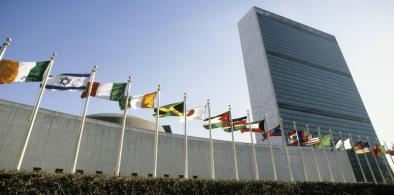
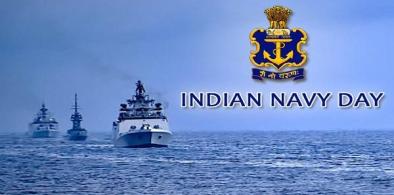
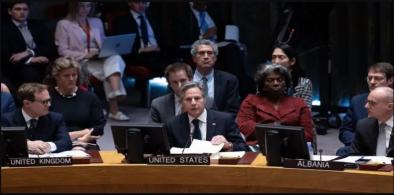
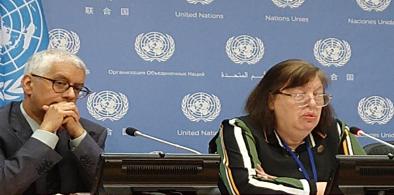









Post a Comment